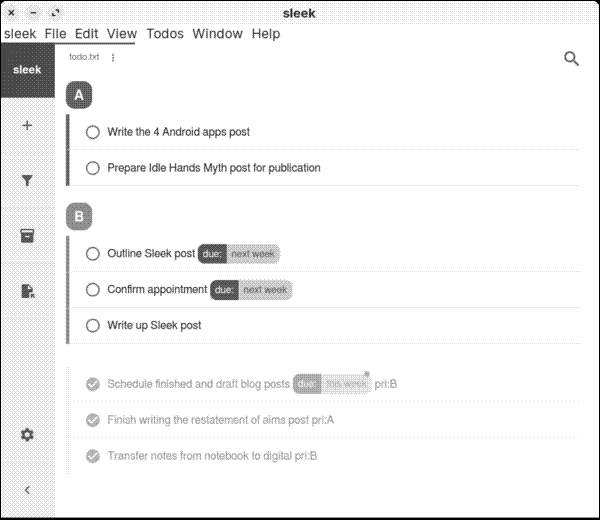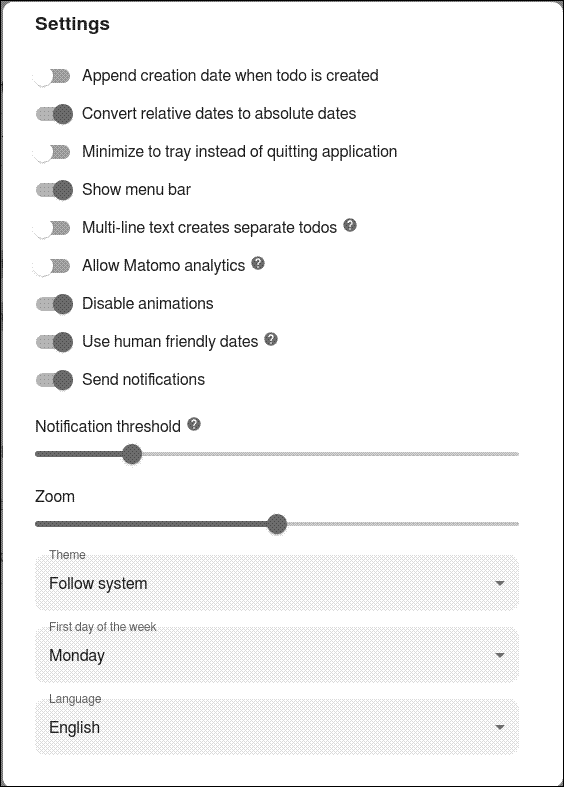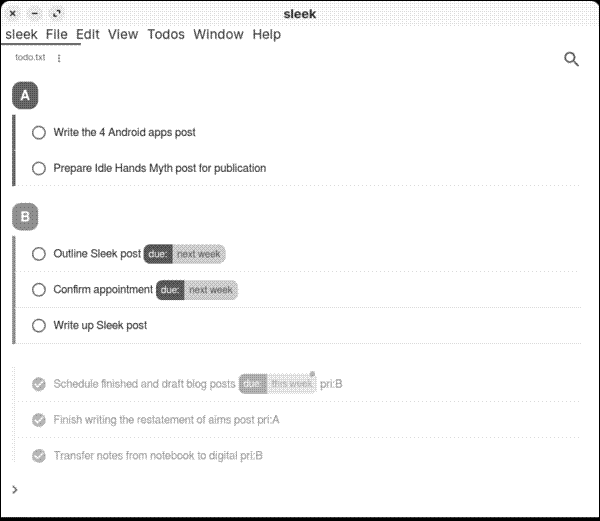Working with Todo.txt on the Desktop with Sleek
4 February, 2025
As someone who lives as much of their life in plain text as I can, a script called todo.txt has for years been a near-perfect tool to help me keep track of my tasks. Not that I’ve been completely faithful to todo.txt, though. I use it for long periods, drift away from it, then come back.
In late 2024, I went back to using todo.txt after an extended period of tracking what I needed to do using pen and paper. While I’m not averse to cracking open a terminal window from time to time, I prefer to work graphically on my desktop. While there are a number of graphical front ends to todo.txt, not all of them are as stripped down as I prefer. And the minimalist app Yishu (which I glanced at in a previous post) is no longer available.
Enter Sleek. It’s a simple, yet effective, way to use todo.txt on the desktop. Let’s take a quick look at it.
Getting Sleek
Tell me if you’ve heard any of this before …
First, check your Linux distribution’s software/app centre. Sleek will probably be available there. If not, you can install it either as a flatpak or a snap.
You can also download some Linux installers, the application’s source code, or installers for those other two operating systems.
Using Sleek
When you first start Sleek, it’s a blank canvas. You need to point it to an existing todo.txt file or create one. Do that by going to the File menu and then choosing either Open a File or Create a File. If you choose the former, all of your existing tasks display.
To add a task, click the + button. This pops up:

Enter a description of the task and then, optionally, add:
- A priority.
- A due date.
- A date on which to display tasks that you need to start in the future (called the threshold date for some reason).
- How often the task repeats.
When you’re finished, click Add. Then, rRepeat that for every task that you need to add.
Here’s what a list of tasks looks like:

But don’t just accumulate tasks, actually do them. Unless you complete those tasks, Sleek is nothing but a repository of todos that will haunt and taunt you. To knock a task off the list, click the circle beside it.
Other Functions
There aren’t that many of them, to be honest. Here are the main ones:
- Use multiple todo.txt files (which display as tabs at the top of Sleek’s window, enabling you to easily jump between them).
- Filter and sort tasks (this is especially useful if you have a lot of tasks with different due dates or priorities).
- Set notifications (though I never could get that to work).
Some Settings
You can, to a point, configure Sleek to fit your needs. Here’s the Setting window (which you can open by selecting Sleek > Settings from the menu bar.

I’ve turned most of those off.
Any Drawbacks?
I don’t think there are all that many, and none of them are showstoppers for me. Mainly, I find the menu bar and the Sleek logo in the sidebar distracting. You can hide the sidebar; the menu bar still displays after I turn it off in the settings.
Here’s what the application looks like with the sidebar hidden:

Other than that, there’s not a lot that bothers me about Sleek. In fact, it’s a good choice if you want to use todo.txt to track your tasks without needing to jump to the command line. Sleek lets you take advantage of a simple and effective task management tool in a familiar environment.